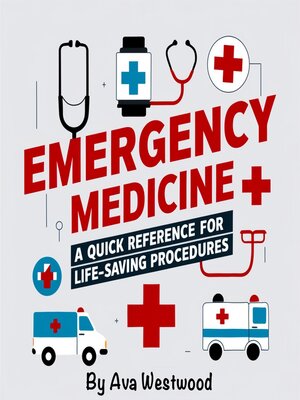Emergency Medicine
audiobook (Unabridged) ∣ A Quick Reference for Life-Saving Procedures
By Ava Westwood

Sign up to save your library
With an OverDrive account, you can save your favorite libraries for at-a-glance information about availability. Find out more about OverDrive accounts.
Find this title in Libby, the library reading app by OverDrive.



Search for a digital library with this title
Title found at these libraries:
| Library Name | Distance |
|---|---|
| Loading... |
In emergency medicine, the first moments of patient care are crucial. A structured approach to initial assessment and triage ensures that life-threatening conditions are identified and managed promptly. The goal is to stabilize the patient while prioritizing those who need immediate intervention.
The Primary Survey follows the ABCDE approach—Airway, Breathing, Circulation, Disability, and Exposure. This systematic evaluation helps in quickly identifying life-threatening issues. Airway assessment focuses on patency, identifying obstructions, and securing the airway if necessary. Breathing evaluation includes checking for respiratory distress, auscultating lung sounds, and providing oxygen or ventilation support. Circulation assessment involves monitoring pulse, blood pressure, and perfusion, with immediate fluid resuscitation or hemorrhage control as needed. Disability evaluation considers neurological status, including Glasgow Coma Scale (GCS) scoring. Exposure involves a full-body examination to detect hidden injuries while maintaining temperature regulation.
Once the primary survey stabilizes immediate threats, the Secondary Survey provides a more comprehensive assessment. This includes a detailed history using the AMPLE mnemonic—Allergies, Medications, Past medical history, Last meal, and Events leading to the illness or injury. A thorough head-to-toe physical examination follows, including imaging and laboratory investigations if needed. The secondary survey ensures that less obvious but critical injuries or illnesses are not overlooked.







